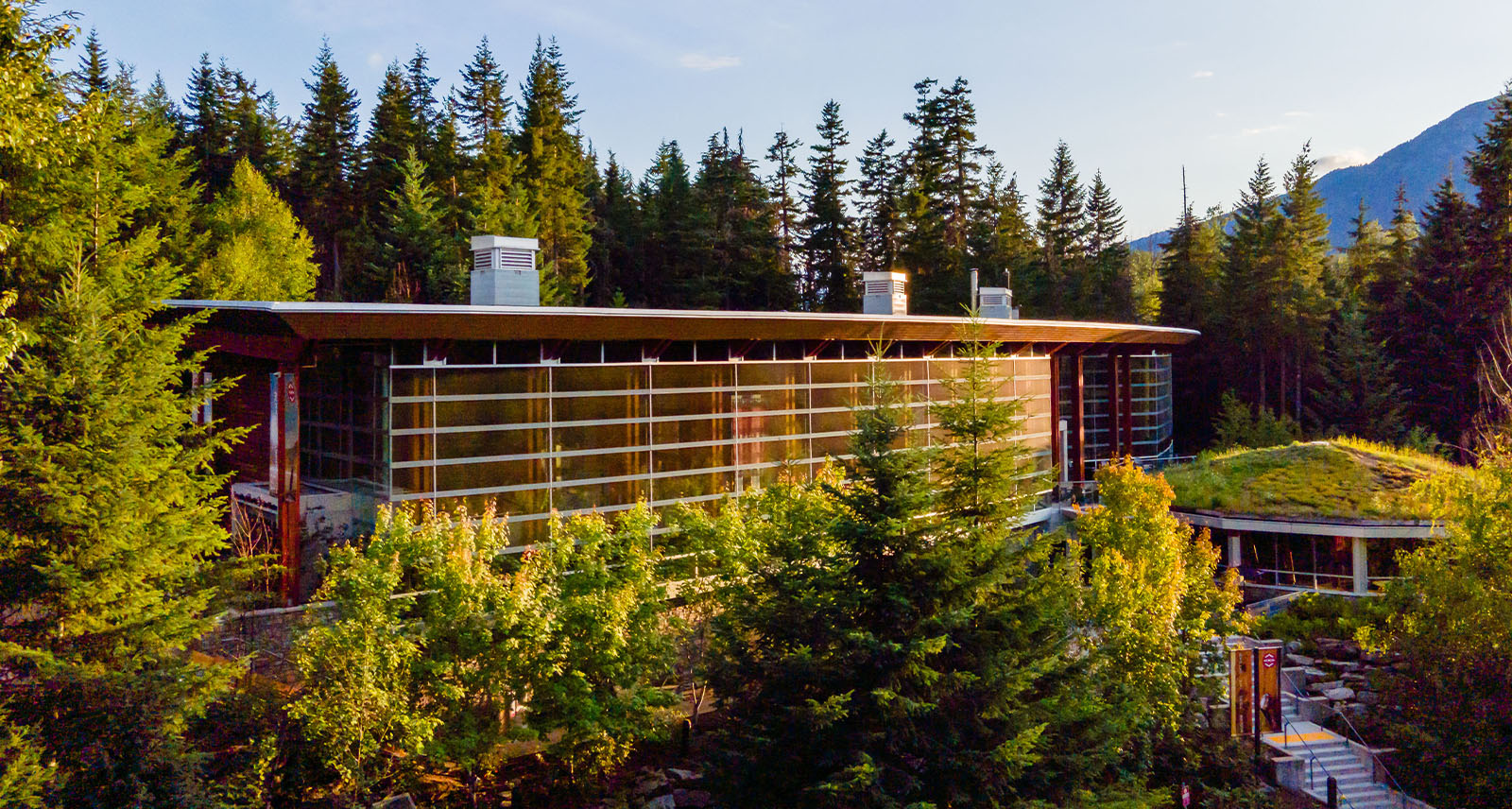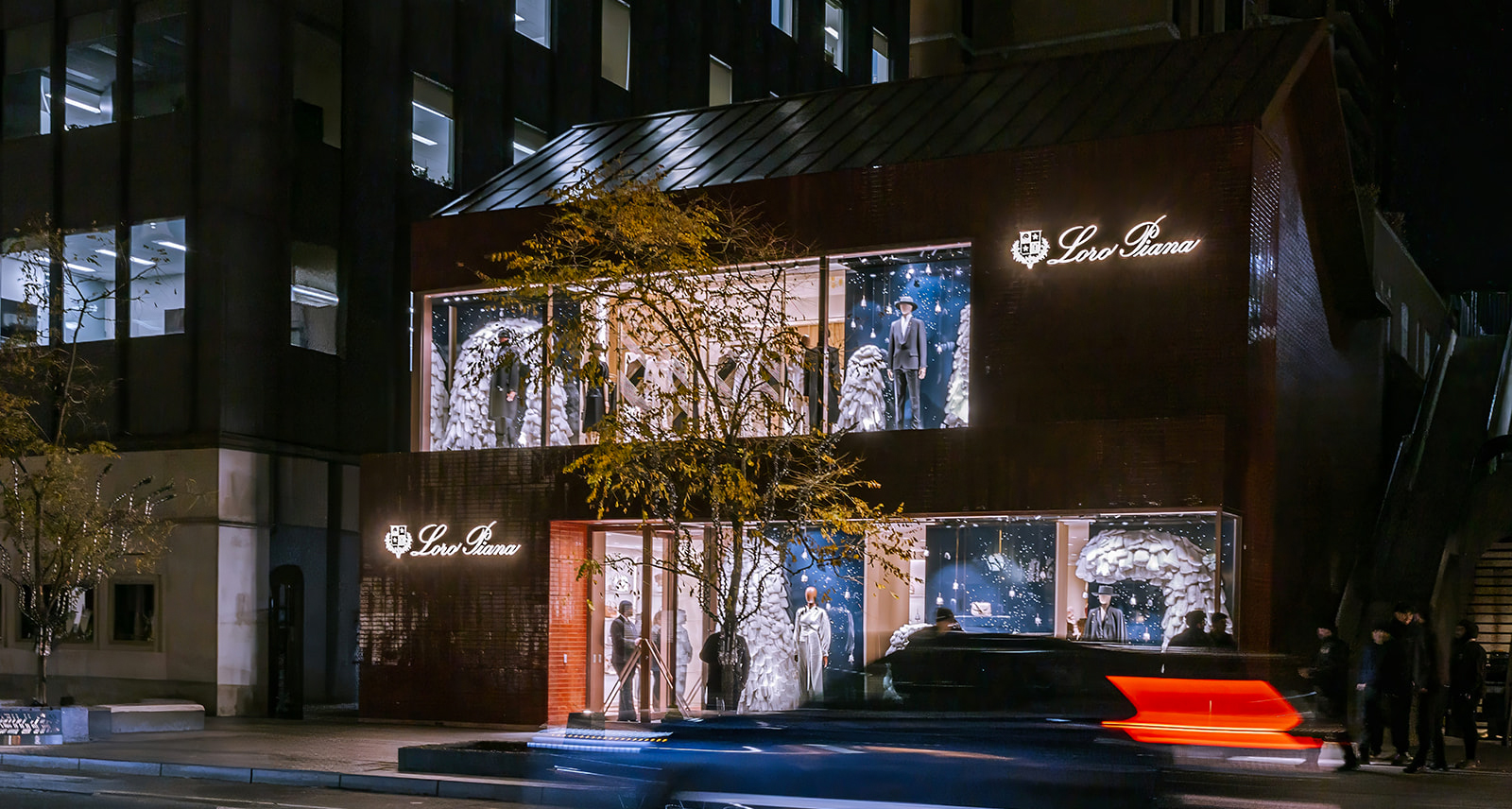Stepping Into the Squamish Lil’wat Cultural Centre
Framed by massive, glaciated peaks of the Garibaldi mountain range, the region we call Whistler Valley has been taken care of since well before “Whistler” was known for chairlifts and powder. Prior to British settlement, the lands hosted Indigenous people of both Sk̲wx̲wú7mesh (English: Squamish Nation) and L̓il̓wat7úl (English: Lil’wat First Nation) cultures. The lush surroundings — mountains, rivers, forests, and lakes — are deeply entrenched in both Sk̲wx̲wú7mesh and L̓il̓wat7úl societies. Indigenous languages preserve this connection today, using natural landmarks as reference points for direction and travel. Both cultures are predominately oral, pouring stories over history like bronze: myths and legends teach values, while true stories preserve real, pivotal events. The Squamish Lil’wat Cultural Centre is an ambassador, acting as both archive and cinema. The Centre retains historical data and upholds tradition, promoting a deeper understanding of both cultures in the community.
To found a joint cultural centre, Sk̲wx̲wú7mesh and L̓il̓wat7úl leaders signed a ‘Protocol Agreement’ in 2001 — the first and only agreement of its kind. This landmark meeting intended to “identify and investigate new economic opportunities for the mutual benefit of both Nations.” Establishing cooperative leadership, the Squamish Lil’wat Cultural Centre has a uniquely symbiotic effect. The agreement mandates that members “express mutual respect for [each] other’s historic presence in the region, shared history and culture, and protect our unique rights to Aboriginal title.”
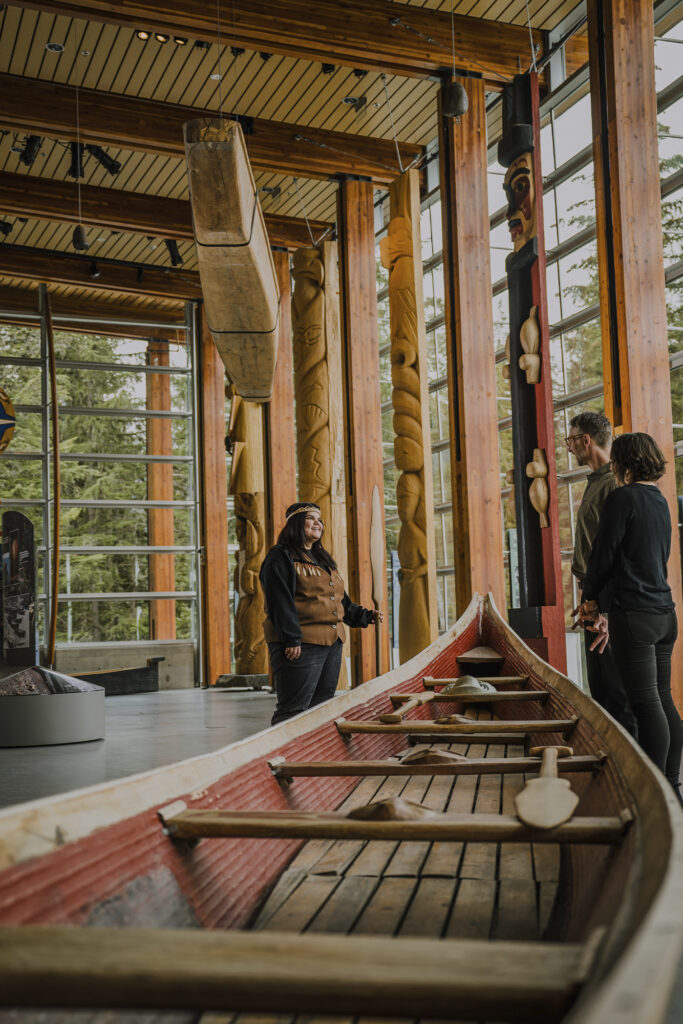
In the Great Hall hangs a massive Squamish hunting canoe, named X̲aays Transformer Brothers. Measuring a staggering forty feet and carved from a single cedar tree, its impressive length is the result of intricate craftsmanship. While it makes a beautiful decoration, Xaays Transformer Brothers isn’t just ornamental. Every year, the canoe departs from the Great Hall, embarking on an oceanic expedition to honour its seafaring spirit. Principal carver Khaápulk Sesiyam (also named Ray Natraoro) consulted historical records, speaking with elders to piece together the Squamish canoe carving practice. Today, the Centre promotes canoe carving with pride, preserving the once-threatened practice.
In fact, this theme — blending cultural preservation with practical application — runs throughout the Centre. The organization says its permanent collection is “dedicated to the core of our culture; ceremony, language, regalia, and stories told through different mediums.” To that point, the Squamish Lil’wat Cultural Centre showcases objects with a central role in the lives of Sk̲wx̲wú7mesh and L̓il̓wat7úl people. Visitors will find items like canoes, blankets, and baskets alongside drums, carvings, and regalia. “With each piece, we infuse the history of our family,” adds the Centre.
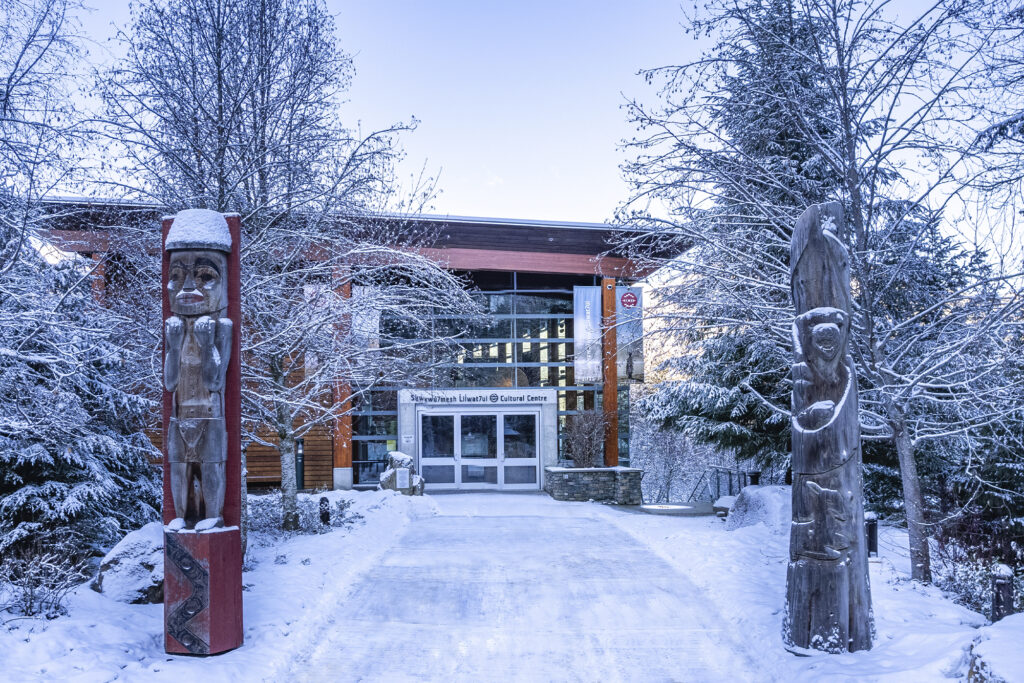
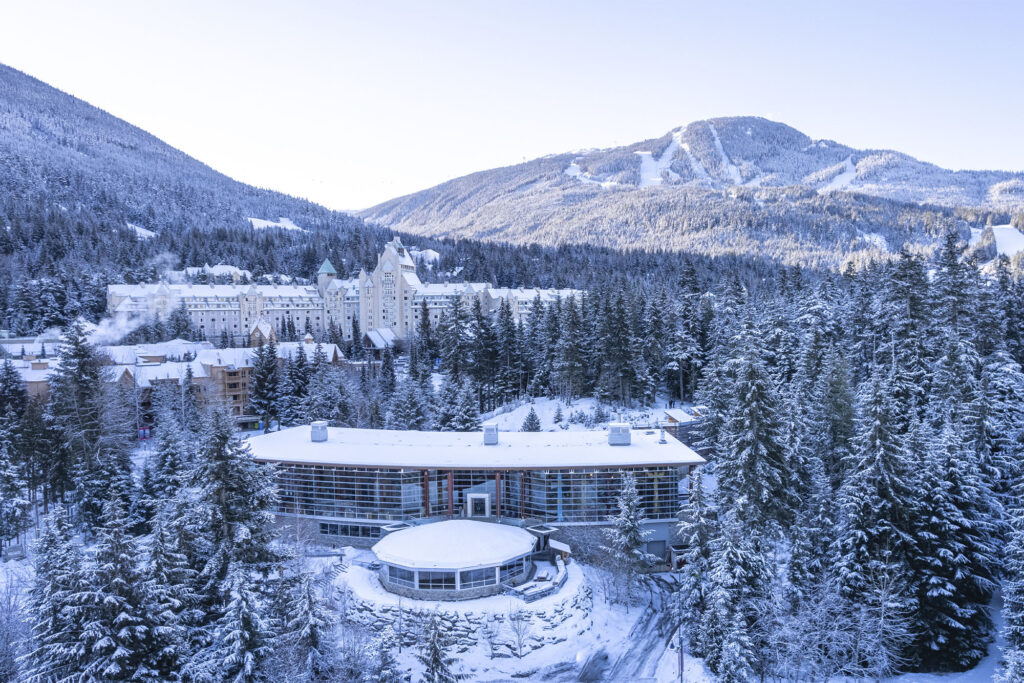
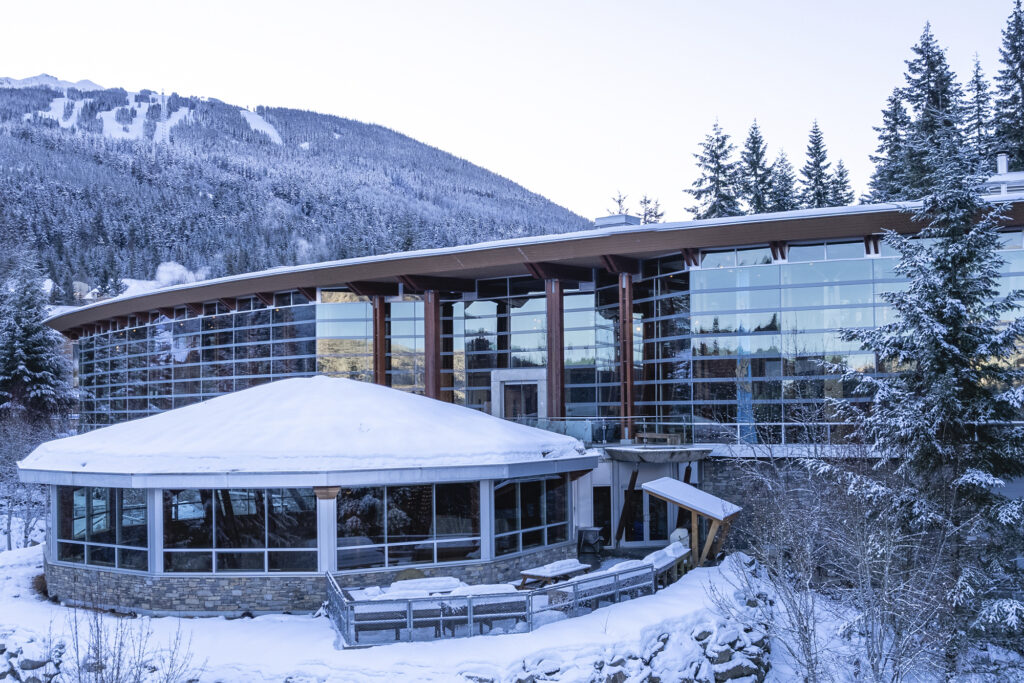
The ‘What We Treasure Tour,’ a hallmark feature of the Squamish Lil’wat Cultural Centre, lights the way for visitors. After a welcome song and short film, tour attendees listen to in-depth narratives from the guides, putting select objects and experiences into context. It’s an authentic expression of modern Indigenous culture — storytelling remains the heart of contemporary Sk̲wx̲wú7mesh and L̓il̓wat7úl communities. Elders retell stories and pass down ancestral knowledge, allowing traditional arts and language to flourish.
Videos from TEDx Whistler, hosted by the Squamish Lil’wait Cultural Centre in 2021 and 2023, are on the organization’s website as part of an extensive ‘SLCC From Home‘ section. Other offerings include ‘Breaking Bannock’ — a series of conversations with Sk̲wx̲wú7mesh and L̓il̓wat7úl influencers — and crafting demonstrations led by Cheximiya Allison Burns Joseph of the Squamish Nation. Elsewhere, a digital archive of ‘Where Are The Children?’ commemorates the Centre’s 2016 showcase of the travelling exhibition. As an introduction to the history of residential schools, the exhibition builds public awareness and encourages a deeper examination of the relationship between settlers and Indigenous people.
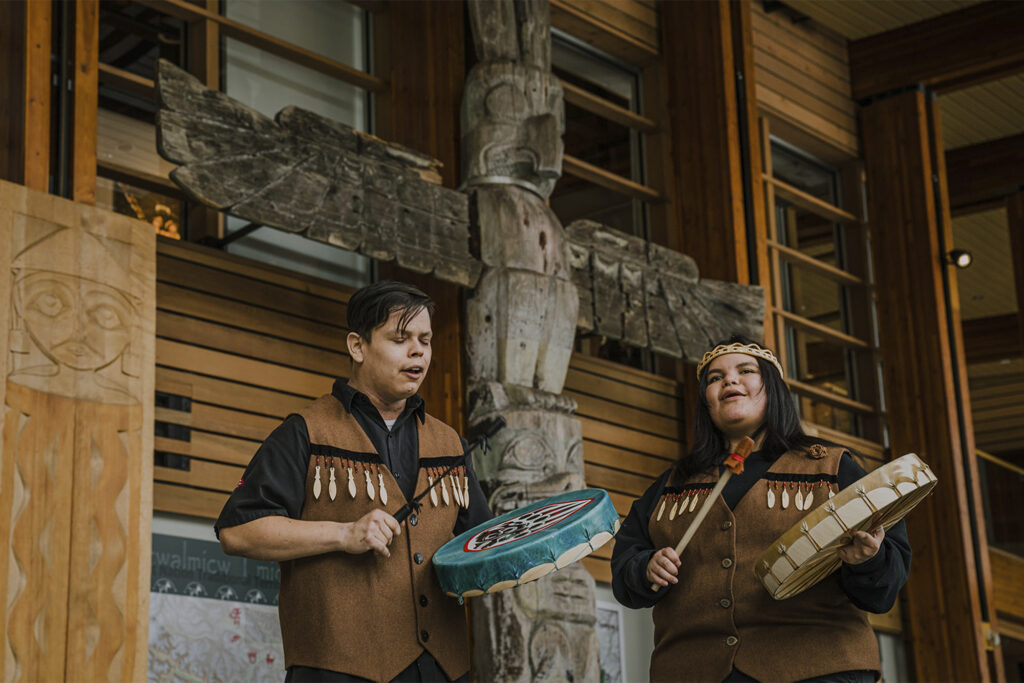
On-site workshops centre artisan practices, with Indigenous-led classes to teach crafts like drum-making and dreamcatcher weaving. Handmade crafts and artwork fill the walls of the Centre’s gallery and gift shop, providing authentic keepsakes for visitors. Both sites employ cultural ambassadors to educate guests about their purchase, answering questions about everything from Indigenous symbolism to product care. They’re a vital component for the Centre’s mission to be “a centre sharing meaningful experiences, educating all, and lifting our distinct Sḵwx̱wú7mesh and Líl̓wat7úl ways.”
Visitors can drop by the Thunderbird Cafe on the lower-level, free of admission. Fair-trade coffee brews behind the counter, courtesy of Indigenous-owned Spirit Bear Coffee Company. The menu is filled with local faire: try a panini with smoked sockeye salmon, fresh-baked pastries, or homemade Lil’wat venison chilli. Local residents can also take advantage of the cafe’s catering options.
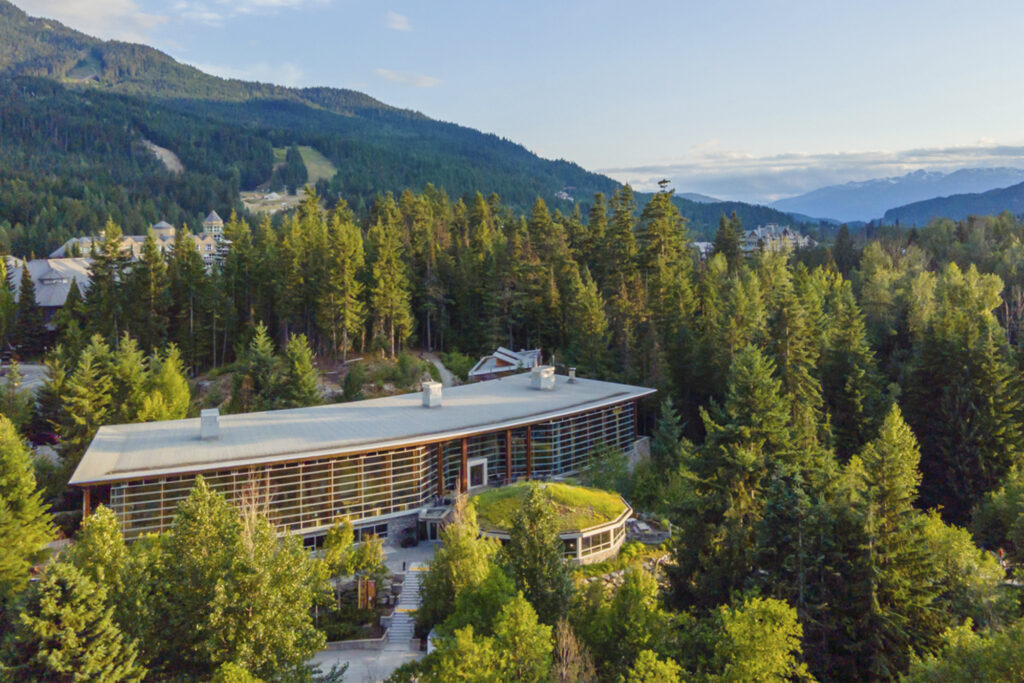
Across all departments — the Centre’s workshops, cafe, gallery, and permanent collection, among others — the Squamish Lil’Wat Cultural Centre “provides meaningful employment with over 90% Indigenous Ambassadors from the Squamish Nation and Lil’wat Nation.” On account of its quality, the Centre has been recognized by The Original Original Accreditation Program with Indigenous Tourism Association of Canada (ITAC) and earned an Authentic Indigenous mark from Indigenous Tourism BC.
